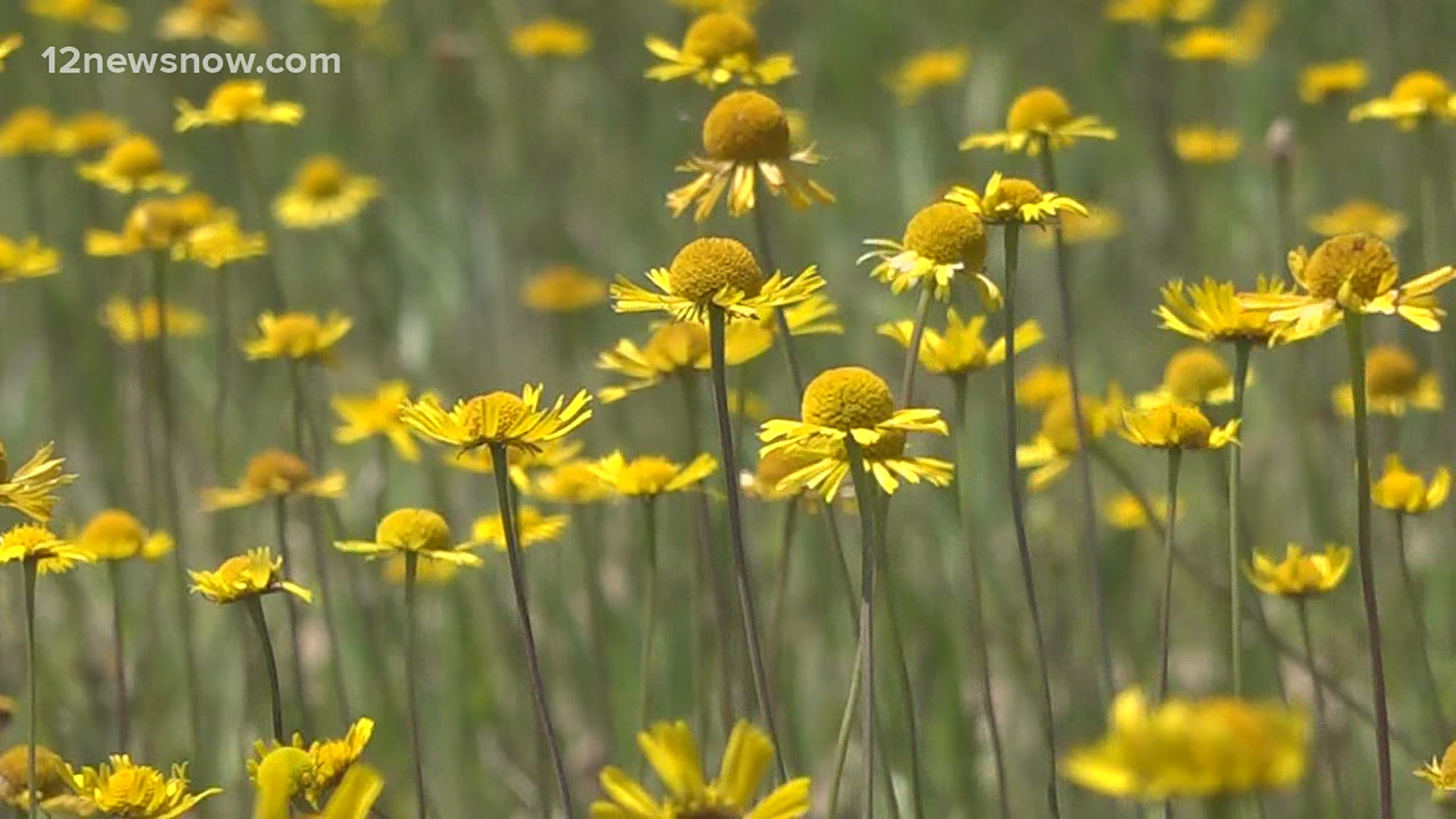BEAUMONT, Texas — Right now, spring is in full effect. Thursday was a beautiful day across Southeast Texas, but for those who suffer from allergies, it's been a bit of a pain.
And while you're pulling out that allergy relief medicine, you may want to take stock of your symptoms. You can have COVID-19 and allergies at the same time, and their symptoms are similar.
If you haven't had seasonal allergies before, it can be difficult to determine whether you're feeling the effects of tree pollen or if it's something more serious like COVID-19.
It's that time of year again when the sun shines a little brighter, temperatures are warmer, and flowers begin to bloom. But then, spring allergies begin to act up.
Does sneezing, runny nose, headaches, stuffy nose, sound familiar? It's important to know the symptoms of spring allergies because they're similar to COVID-19 symptoms.
RELATED: Where can I get a COVID-19 test?
RELATED: Here's how you can sign up for the COVID-19 vaccine in Southeast Texas
“They get out in public and start coughing and sneezing, and they're worried people are going to think they have COVID even though that they don't,” said ear, nose and throat specialist Dr. Don Duplan.
That's why doctors want you to know the difference between allergies and COVID-19.
“With seasonal allergies, unless you’re severe asthmatic, you're not going to really see respiratory symptoms like you do in coronavirus,” said Beaumont anesthesiologist Dr. Ray Callas.
Seasonal allergies are also temporary, but COVID-19 isn't. So, how do you know when is it time to take a coronavirus test?
“Shortness of breath, if you start having chest pain, if you start having loss of sense of taste, loss of sense of smell, if you start having headaches, if you start having severe fatigue, then it's definitely more than seasonal allergies, and I definitely recommend going and getting a corona test.
Pollen can be carried inside your home by pets, open windows, and shoes o reduce exposure, you can continue wearing a mask.
“The masks we're having to wear for COVID also block pollen air purifiers you can get for your home especially for the bedroom can be a big help,” said Dr. Duplan.
Dr. Duplan also recommends throwing out the Benadryl and taking an allergy pill that lasts for 24 hrs.
Additional coronavirus symptoms
The symptoms of coronavirus can be similar to the flu or a bad cold. Symptoms include a fever, cough and shortness of breath, according to the Centers for Disease Control.
Most healthy people will have mild symptoms. A study of more than 72,000 patients by the Centers for Disease Control in China showed 80 percent of the cases there were mild.
But infections can cause pneumonia, severe acute respiratory syndrome, kidney failure and even death, according to the World Health Organization. Older people with underlying health conditions are most at risk.
The CDC believes symptoms may appear anywhere from two to 14 days after being exposed.
RELATED: VERIFY: No, members of Congress who are self-quarantined for coronavirus cannot vote remotely
Human coronaviruses are usually spread through...
- The air by coughing or sneezing
- Close personal contact, such as touching or shaking hands
- Touching an object or surface with the virus on it, then touching your mouth, nose or eyes before washing your hands.
Help stop the spread of coronavirus
- Stay home when you are sick.
- Eat and sleep separately from your family members
- Use different utensils and dishes
- Cover your cough or sneeze with your arm, not your hand.
- If you use a tissue, throw it in the trash
Lower your risk
- Wash your hands often with soap and water for at least 20 seconds. If soap and water are not available, use an alcohol-based hand sanitizer.
- Avoid touching your eyes, nose, and mouth with unwashed hands.
- Avoid close contact with people who are sick.
- Clean and disinfect frequently touched objects and surfaces.
- If you are 60 or over and have an underlying health condition such as cardiovascular disease, diabetes or respiratory illnesses like asthma or COPD, the World Health Organization advises you to try to avoid crowds or places where you might interact with people who are sick.

